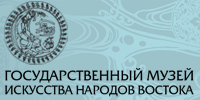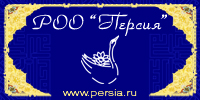 The first issue of the year 2004 opens with a picture story about Afghanistan.
The first issue of the year 2004 opens with a picture story about Afghanistan.
Writings
Boris Konikov, Galina Sevostyanova. The Master Charmed by Ainu. The authors describe the unique collection of works by Japanese painter Byozan Hirasawa, which is kept in the Omsk Art Museum. In the 19th century, the artist lived among the Ainu for a long time, and captured the images of their cultural life, which is gone long since. Sergey Arutyunov, Corresponding Member of the Russian Academy of Sciences, comments on the paintings from this collection.
Sergey Toroptsev. Maitre of Literary Acupuncture. Two stories by Wang Meng, an author from China, are published in Russian for the time, together with an extensive foreword. The 70-year-old master of Chinese fiction no longer represents counter-culture, as he used to do it before; now he fully belongs to national culture, his works are widely read and translated.
Olga Gorodetskaya. The Way of a Mortal is to Fall in Love with Death. This article features analysis of life and death in the writings of Lao Zi. The author offers her own poetical translation of Dao De Jing, trying to convey semantic scope and visible graphics of Chinese characters. The author also discusses the theme of death in parables of Zhuang Zi, another Taoist thinker.
The Land of Orient
Natalia Chekurova. Ladakh. This region of India, which is difficult to access, has attracted scholars for a long time. The author tells us, in both detailed and fascinating manner, about the origins of Ladakh's ancient culture and about the folk festival that she witnessed there.
Hanne Schoenig. Make-up and Perfumes of Yemenite Women. A fragment, translated into Russian, of a new book by German scholar who studies aesthetic values of Yemenite women related to vision and smell. Dr. Mikhail Rodionov, a specialist in history, comments on the book.
Viktor Solkin, Vladimir Larchenko. Restoration of Eternity. In 2003, two famous sphinx statues that have been installed in the 19th century on the bank of the Neva River, faced the unique restoration process. The authors took this occasion to visit Egypt and the remains of the temple where these statues used to stand, and to reconstruct their history and the role they played in the spiritual life of this ancient civilisation.
Vladimir Makarenko. The National Flag and the National Emblem of the Philippines. The author describes these national symbols of the Philippine Republic and their history.
Alexander Kadyrbaev. Pirates of Russian Troubled Ages. From the world's history we know about pirates who became statesmen and national heroes. The author reminds us that such cases happened in Russia as well.
Olga Bibikova. Arabic Thoroughbred. The article is devoted to specific features of Arabic horses, expansion and current state of this breed.
Svetlana Ryzhakova. Women's Rites Performed by Right Hand, Left Hand, and Other Parts of the Body and the Soul. The people of Northern Bengal practice several religious rites that are performed by women only. The author managed to reveal the meaning of these rites and to take part in the rite of summoning the rain.
Maria Kullanda. Dimensions of Turkish Fashion. The history of Ottoman costume reflects multinational nature of this empire, the supremacy of Islam, and European influence on the public notions of proper attire for various social groups.
Nina Konovalova. Ando Tadao's Stairways. The famous Japanese architect gives special attention to stairways, and emphasizes their meaning by using various artistic means.
Nikolay Listopadov. The Land of the Thunder Dragon. This is an account of a journey through Bhutan, a Buddhist kingdom lost in the Himalayas, where traditions still dominate the life of local population. The author has visited remote monasteries, every one of which is unique.
Leonid Kostin. The Queen of Weeping Willow and Verses. Valentina Alieva, being educated as a musician, found her true vocation in painting. She mastered the "Chinese style" to such extent that local press lauded her works presented at the exhibition in Shanghai.
Oleg Torchinsky. Shri Chaval and the Others... The author describes specific features of Indian cuisine as he has seen it during his stay in India. At the same time he emphasises that it is impossible to list all the refined dishes of this country.
6 Mokhovaya St. is the new column of our magazine, which takes its name from the official address of the Oriental Centre, Russian State Library. This building hosts exhibitions, seminars, and meetings with scholars and cultural workers from Asia and Africa. In this issue we publish a lecture delivered by Japanese specialist in Slavic philology, Professor Yoshikazu Nakamura who spoke on Russian culture in Japan.
As usual, in the end of this issue our reader will find traditional columns: "Reader" and "Orientnet".






